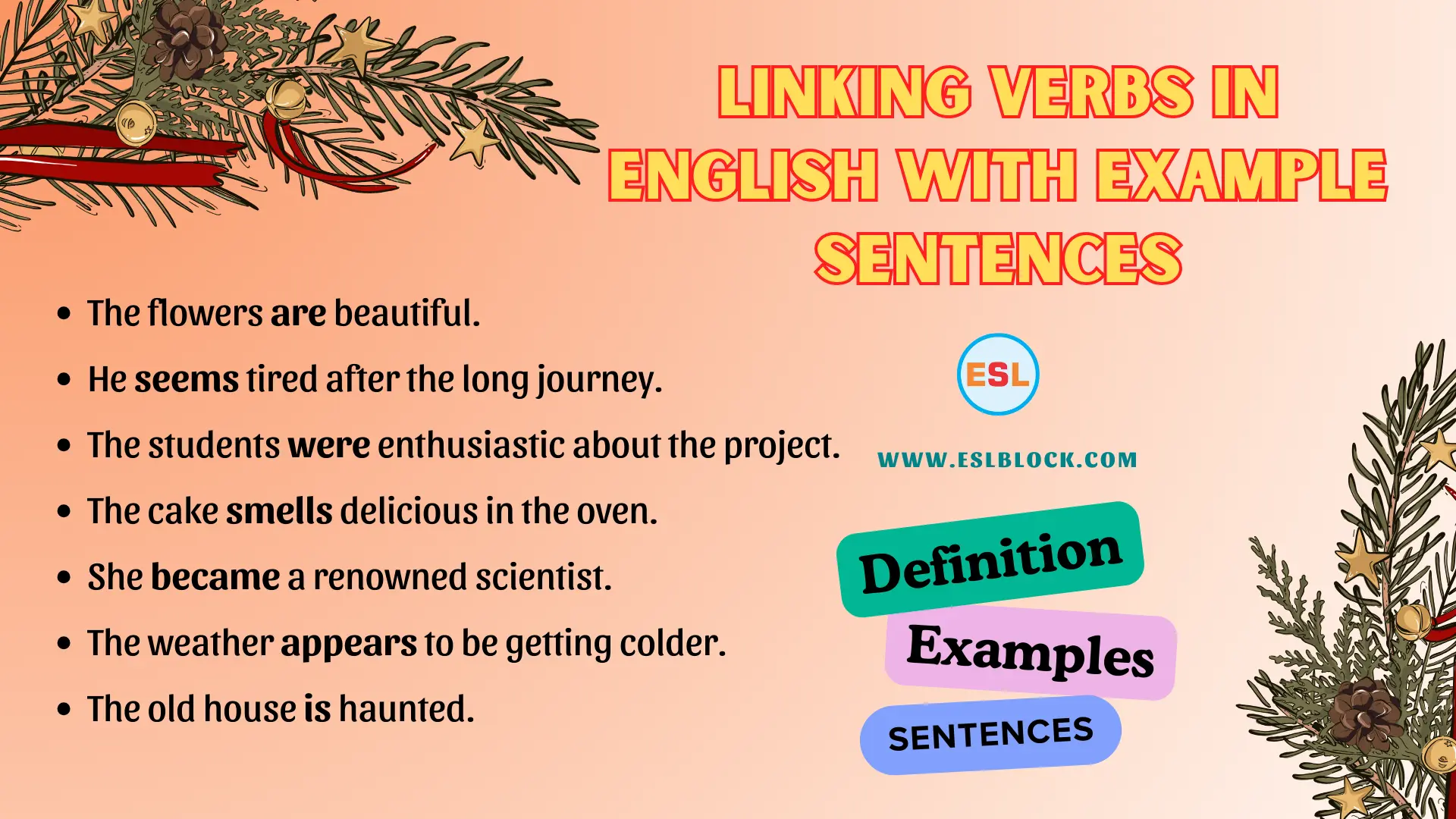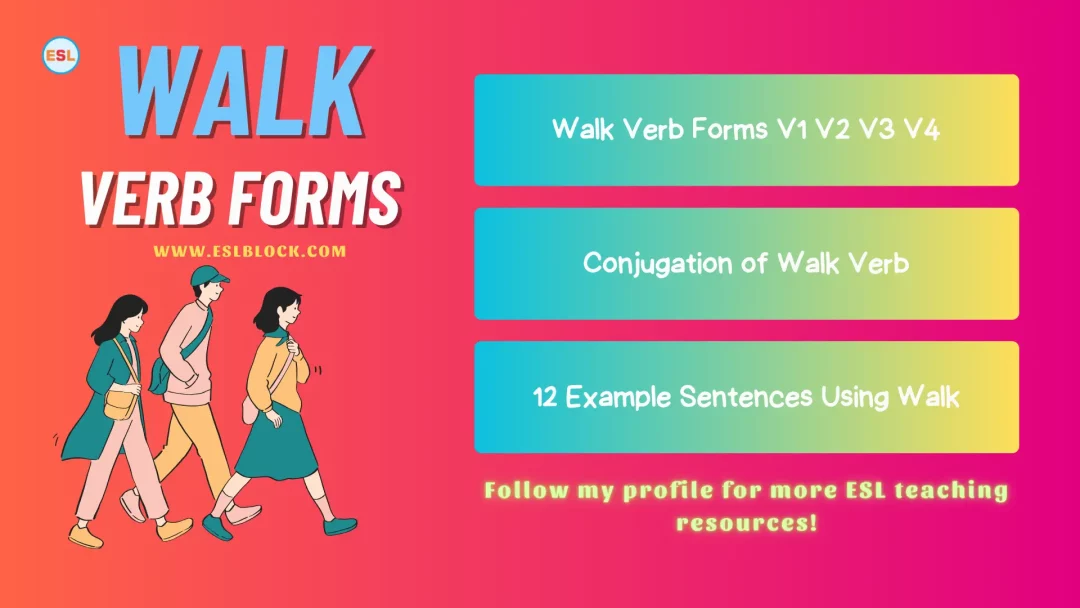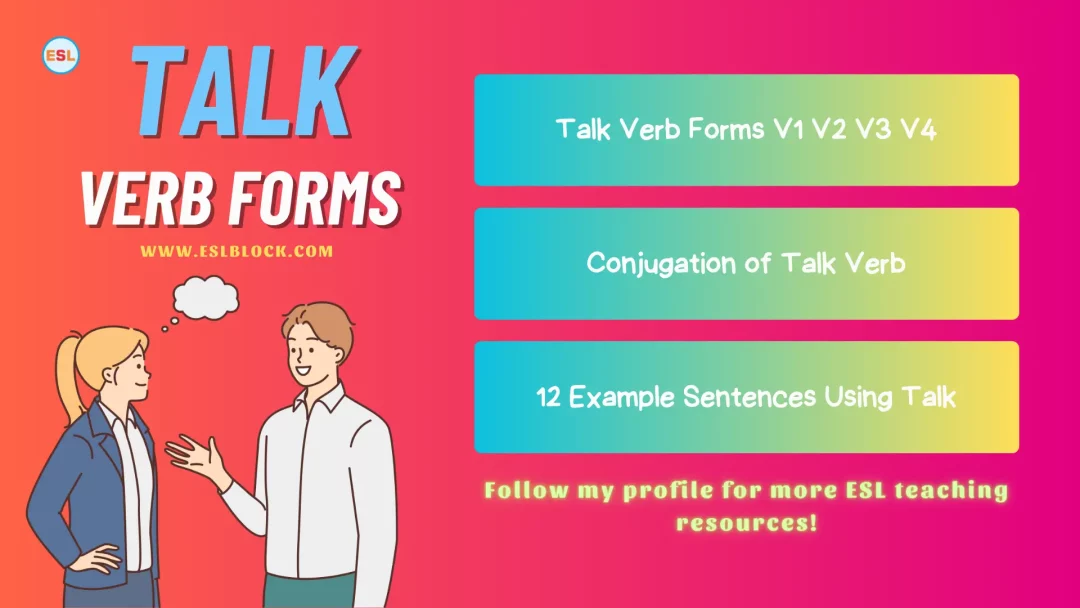Linking Verbs in English with Example Sentences

![]()
In the vast realm of English grammar, understanding the intricacies of different parts of speech is crucial for effective communication. Among these, linking verbs stand as unique connectors that go beyond mere action, contributing depth and description to sentences.
This blog post will delve into the definition, meaning, and examples of linking verbs, shedding light on their significance in constructing meaningful sentences.
Linking verbs, often overlooked in the bustling world of verbs, play a pivotal role in connecting the subject of a sentence with a subject complement. They form the bridge that imparts additional information about the subject, facilitating a more comprehensive understanding. Let’s unravel the essence of linking verbs with a concise definition and a real-life example.
What are Linking Verbs?
Linking verbs, a subset of verbs in English, serve as connectors between the subject of a sentence and a subject complement. Unlike action verbs that denote physical or mental activities, linking verbs establish a relationship of description or identity. Essentially, they link the subject to a complement that provides more information about the subject.
Example:
Imagine a garden in full bloom. In this scenario, the linking verb “is” comes into play when describing the state of the garden. For instance, “The garden is beautiful.” Here, “is” links the subject, the garden, to the complement, “beautiful,” conveying a state of being or condition. The linking verb acts as a bridge, enhancing the description of the garden beyond its mere existence.
Examples of Linking Verbs
- is
- am
- are
- was
- were
- seem
- appear
- become
- feel
- remain
- smell
- look
- taste
- sound
- grow
- turn
- prove
- stay
- get
- keep
Example Sentences using Linking Verbs
- The flowers are beautiful.
- He seems tired after the long journey.
- The students were enthusiastic about the project.
- The cake smells delicious in the oven.
- She became a renowned scientist.
- The weather appears to be getting colder.
- The old house is haunted.
- The solution to the problem remains unclear.
- The new car looks sleek and modern.
- They are the winners of the competition.
- The coffee tastes bitter this morning.
- The music sounds soothing.
- Her happiness proved infectious to everyone around her.
- The colors of the sunset are breathtaking.
- The child grows more independent with each passing day.
- The leaves of the trees turn golden in the autumn.
- His commitment stays unwavering in challenging times.
- With effort, he got better at playing the guitar.
- The secret remained safe for years.
- Despite the chaos, she kept calm in the storm.
Conclusion
In conclusion, linking verbs, though subtle in their role, serve as essential connectors in constructing well-formed sentences. Their ability to link the subject with a complement adds depth and nuance to language, making communication more precise and vivid. Mastering linking verbs is fundamental not only for grammatical accuracy but also for harnessing the full expressive potential of the English language. In the intricate tapestry of parts of speech, linking verbs stand as indispensable threads, weaving coherence and meaning into the fabric of communication.






